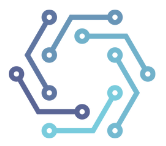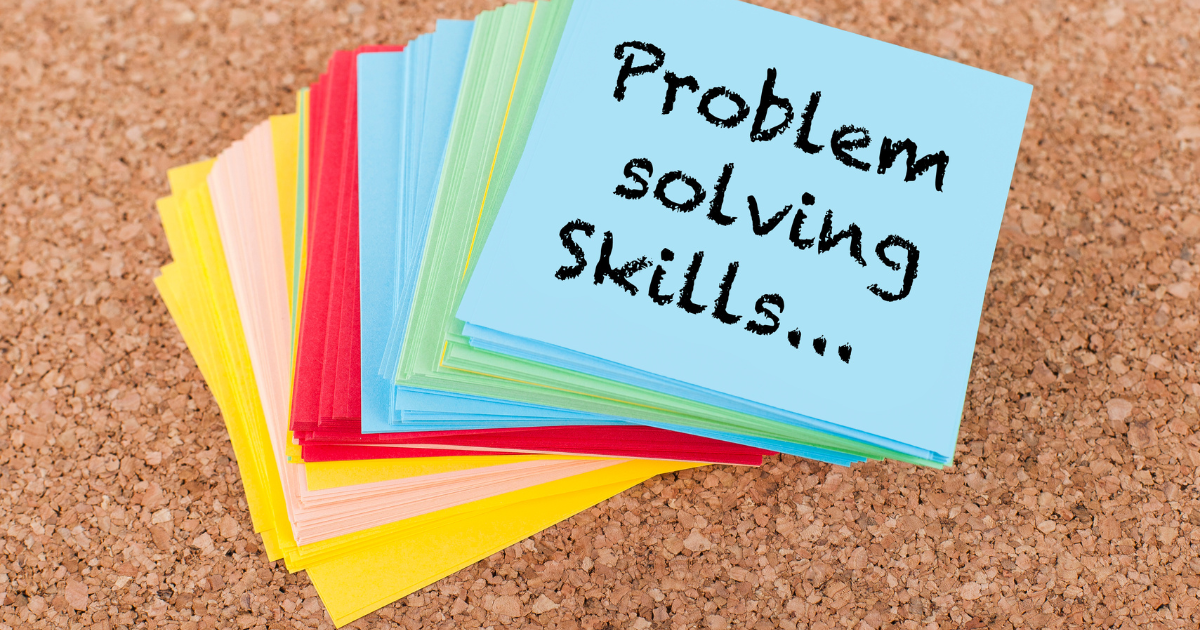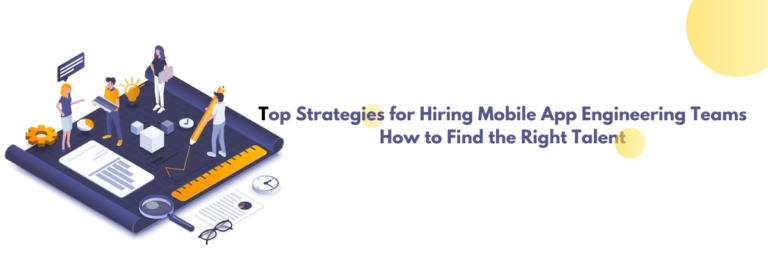Ace Your Next React.js Developer Interview with These Proven Strategies
Are you gearing up for a React.js developer interview and looking to land your dream job?
Did you know that 85% of hiring managers consider the interview process to be the most important factor in their hiring decisions?
That’s right – your technical skills and experience are just the starting point. To truly stand out from the competition and ace your next interview, you need to be prepared and strategic.
In this blog post, we’re going to help you do just that. We’ll be delving into the world of React.js development and exploring proven strategies that will help you interview like a pro.
So, if you’re ready to learn how to Interview a React.js Developer like a pro, let’s dive in!
Table of Contents
- Research the Company and the Interviewer
- Brush Up on React.js Fundamentals
- Practice Common React.js Interview Questions
- Beginner Level React js Interview Questions and Answers
- Advance Level React js Interview Questions and Answers
- Demonstrate Your Portfolio
- Showcase Your Problem-Solving Skills
- Prepare Questions to Ask the Interviewer
- Post-Interview Follow-Up
- Final Thoughts
- Frequently Asked Questions
Research the Company and the Interviewer

-
Company Research
Check out the company’s website and social media accounts. Look for information on the company’s mission, values, products, and services. Check out the company’s blog or news section to see if they have been in the news recently. This will give you a better understanding of the company’s culture and what they are currently working on.
-
Investigating the Interviewer
Look up the interviewer on LinkedIn or the company website. Check out their job title, experience, and any articles or blog posts they have written. This can give you an idea of what they may be interested in and what questions they may ask.
-
Reading Between the Lines
Search for the company and interviewer on Glassdoor or other review sites. Look for reviews from current and former employees, and pay attention to any recurring themes. This can give you an idea of the company’s culture and any challenges they may be facing.
-
Tapping into Your Network
Network with current and former employees. If you know anyone who works or has worked at the company, reach out to them for their perspective. They may be able to provide you with insider information on the company culture or the interviewer’s style.
-
Competitive Analysis
Research the company’s competitors. This can give you an idea of the industry and what challenges the company may be facing.
Once you have done your research, you can use this information to tailor your answers and questions to the specific company and interviewer. For example, if you know the company places a strong emphasis on teamwork, you can highlight your experience working on team projects during the interview.
If you know the interviewer has a background in design, you can ask them about their design philosophy. Researching the company and interviewer shows that you are interested and prepared, and can help you stand out from other candidates.
Brush Up on React.js Fundamentals

- React.js Basics:
- Understanding what React.js is and how it works
- React.js core concepts like components, props, state, and JSX
- The difference between functional and class components
- Understanding how to use React.js to build a user interface
- React.js Component Lifecycle Methods:
- Understanding the different lifecycle methods for class components
- Knowing when to use componentDidMount, componentDidUpdate, and component will unmount
- Understanding how to update the state in response to lifecycle methods
- React.js Virtual DOM:
- Understanding what the virtual DOM is and how it works
- Understanding how React.js uses the virtual DOM to update the UI efficiently
- Knowing the benefits of using the virtual DOM over directly manipulating the DOM
It’s important to review these concepts thoroughly and practice implementing them in code. Being able to explain these concepts to potential employers and demonstrate your understanding through coding challenges will help you stand out during your interview.
There are several resources available to help you brush up on your React.js fundamentals. The official React.js documentation is an excellent place to start, as it provides a comprehensive overview of React.js and its features. Online tutorials and courses, such as those offered by Udemy, Codecademy, and Pluralsight, can also be helpful resources for reviewing React.js concepts.
In addition to reviewing the React.js fundamentals, it’s essential to keep up with the latest updates and trends in the React.js ecosystem to create React App. Staying current with the latest technologies and best practices will help you demonstrate your knowledge and passion for React.js development during your interview.
Practice Common React.js Interview Questions
One of the most effective strategies to ace your React.js developer interview is to practice answering common interview questions. This will help you gain confidence, identify areas where you may need to improve, and demonstrate your knowledge and skills to potential employers. Here are some common React.js interview questions to help you prepare:
- What is React.js, and what problem does it solve?
- What are the core concepts of React.js?
- What is the difference between state and props in React.js?
- How do you create a component in React.js?
- What is the difference between a functional component and a class component?
- What are the lifecycle methods in React.js?
- What is the difference between the componentDidMount and componentDidUpdate lifecycle methods?
- What are the sources of data that allow you to create dynamic and interactive components?
- What is Redux, and how does it work with React.js?
- What is the significance of the virtual DOM in React.js?
- What is JSX, and why is it used in React.js?
To effectively practice answering these questions, it is best to start by reviewing the answers to these questions and taking notes. Then, try to answer them aloud, either by speaking to yourself or in front of a friend or family member. Practice until you feel comfortable and confident answering these questions, and be prepared to provide real-world examples and code snippets to support your answers.
It is also important to remember that interview questions may vary depending on the company and position you are interviewing for. Therefore, it is a good idea to review the job description carefully and research the company’s culture and values to get a better idea of the type of questions they may ask.
Beginner Level React js Interview Questions and Answers
To prepare for a React.js developer interview, it’s important to be familiar with common interview questions and have a solid understanding of React.js fundamentals. In this section, we will provide an overview of some common React.js interview questions and answers to help you prepare for your next interview.
-
What is React.js?
Answer: React.js is a JavaScript library used for building user interfaces. It’s an open-source arrow function library that allows developers to create reusable UI components and manage their state efficiently.
-
What is JSX?
Answer: JSX is a syntax extension of JavaScript that allows developers to write HTML-like code inside their JavaScript files. It’s an essential concept to understand as React.js heavily relies on JSX.
-
What is the difference between props and state?
Answer: Props and state are two crucial concepts in React.js. Props are used to pass data between components, while state refers to the current state of a component. The primary difference is that props are passed from parent components, while the state is managed within a component.
-
What is a component in React.js?
Answer: A component is a reusable UI element that can be used to build complex user interfaces. Components can be used to build a single UI element or multiple UI elements that work together.
These reusable components have their own logic and controls, and they can be reused through the application, which, in turn, dramatically reduces the development time of an application -
What is the purpose of the virtual DOM in React.js?
Answer: The virtual DOM is an abstraction of the actual DOM element used by React.js to optimize the rendering of components. React.js compares the virtual DOM to the actual DOM and only updates the parts of the actual DOM that have changed, resulting in faster and more efficient rendering.
-
What are lifecycle methods in React.js?
Answer: Lifecycle methods are methods that get called at different points in the lifecycle of a React.js component. These methods include mounting, updating, and unmounting methods, which allow developers to hook into specific points in a component’s lifecycle to perform certain actions.
-
How do you create a React.js component?
Answer: A React.js component can be created using either a class or a function. Here’s an example of a functional component:
-
What is the purpose of setState() in React.js?
Answer: setState() is a method used to update the state of a component in React.js. When setState() is called, React.js updates the state of the component and re-renders the UI.
-
What is the difference between a controlled and an uncontrolled component in React.js?
Answer: In a controlled component, the component’s state is managed by React.js, while in an uncontrolled component, the state is managed by the DOM. Controlled components provide better performance and are easier to test and maintain.
-
How do you pass data between components in React.js?
Answer: Data can be passed between components in React.js using props. Props are passed down from parent components to child components, allowing data to flow throughout the application.
Advance Level React.js Interview Questions and Answers
Are you an experienced React.js developer looking for your next big opportunity? Congratulations on reaching this level of expertise! As an advanced React.js developer, you’ll likely face more challenging interview questions and technical assessments to prove your skills.
To help you prepare for these challenging interviews, we’ve compiled a list of advanced-level interview questions and answers specific to React.js. These questions will test your knowledge of React.js concepts, architecture, and best practices. By reviewing and practicing with these questions, you can showcase your expertise and impress potential employers.
1. What is the purpose of a higher-order component (HOC) in React.js?
Answer: A higher-order component is a function that takes a component as an input and returns a new component with enhanced functionality. HOCs are used to make reusable components that add common functionality, such as authentication or data fetching, to multiple components.
2. What is Redux, and how does it work with React.js?
Answer: Redux is a state management library used in React.js applications. It provides a central store where the application state is managed, and components can subscribe to changes in the store. Redux works with components in React.js by allowing components to dispatch actions that update the store, and by providing a way for other components to access data from the store.
3. What are hooks in React.js, and how do they work?
Answer: Hooks are a new addition to React.js that allows developers the extraction and reuse stateful logic of React.js features in functional components. They work by allowing developers to add state and other React.js functionality to functional components without needing to convert them from pure function components back into class components.
Hooks enable this across multiple components arrow function without the burden of higher order components or render props.
4. What is server-side rendering in React.js, and what are the benefits?
Answer: Server-side rendering is the process of rendering React.js components on the server instead of the client. The benefits of server-side rendering include faster load times, better SEO, and improved performance on slow devices.
5. How do you optimize the performance of a React.js application?
Answer: There are several ways to optimize the performance of a React.js application, including code splitting, lazy loading, and using should Component Update() or React. memo() to prevent unnecessary re-renders. Other methods include using a production build of React.js, implementing server-side rendering, and minimizing the size of the application’s assets.
6. What is the difference between React.js and Angular?
Answer: React.js and Angular are both popular front-end JavaScript frameworks, but they have several key differences. React.js is a library, while Angular is a full-fledged framework. The former focuses on building UI components, while the latter provides a complete solution for building web applications. React.js is known for its simplicity and flexibility, while Angular is known for its opinionated approach and robust set of features.
7. What is the purpose of the use Context() hook in React.js?
Answer: The use Context() hook is used to access a context object in a React.js function component. Context is used to share data between components without the need for props drilling, and the use Context() hook makes it easier to consume context in functional components.
8. What are the benefits of using TypeScript with React.js?
Answer: TypeScript is a superset of JavaScript that provides static typing and other features that improve the developer experience. When used with React.js, TypeScript provides better type checking, increased code readability, and improved scalability.
9. What is the difference between shallow rendering and full rendering in React.js?
Answer: Shallow rendering is a testing technique that renders only the top-level component, while full rendering renders the entire component tree. Shallow rendering is faster and more efficient for testing individual components, while full rendering is better for testing the interaction between two or more components together.
10. What are the best practices for testing a React.js application?
Answer: Best practices for testing a React.js application include writing unit tests for individual components, using tools like Jest and Enzyme, and following the principles of test-driven development. Other practices include mocking API calls and other external dependencies, using snapshot testing, and using Cypress or other end-to-end testing frameworks for integration testing.
Demonstrate Your Portfolio
As a React.js developer, showcasing your previous work and projects is an excellent way to demonstrate your skills and expertise to potential employers. Here are some tips for effectively demonstrating your portfolio:
-
Select Your Best Projects
Choose a few of your best projects to showcase your skills and experience. Ideally, these should be projects that demonstrate your ability to solve complex problems, use cutting-edge technology, and create visually appealing user interfaces.
-
Create a Clear and Concise Presentation
Present your projects in a clear and concise manner, highlighting the most critical features and functionality of each project. Use screenshots and videos to show the user interface and explain how each project works.
-
Explain Your Process and Decisions
Explain your thought process and decision-making throughout the development process. This will demonstrate your ability to problem-solve, communicate effectively, and work collaboratively.
-
Provide Access to Your Code
Provide access to your code on platforms such as GitHub or Bitbucket. This will allow potential employers to see the quality of your code, your coding style, and how you approach problem-solving.
-
Be Prepared to Answer Questions
Be prepared to answer questions about your projects, including the technologies used, the challenges faced, and how you overcame them. This will demonstrate your expertise and ability to think critically about your work.
-
Keep your Portfolio Up to Date
Ensure that your portfolio is up to date with your latest projects, skills, and experience. Regularly update your portfolio to reflect your growth and development as a React.js developer.
Showcase Your Problem-Solving Skills
Problem-solving skills are essential for React.js developers, as they often encounter complex challenges while building applications. Demonstrating your problem-solving skills during an interview is an excellent way to showcase your abilities as a developer. Here are some tips for showcasing your problem-solving skills:
-
Prepare with Practice Problems
Before the interview, practice solving React.js coding problems online, such as those found on platforms like LeetCode or CodeWars. These problems are designed to test your problem-solving skills and provide excellent practice for interviews.
-
Communicate your Thought Process
While solving a problem, explain your thought process and the steps you are taking to solve the problem. This will demonstrate your ability to think critically and explain your reasoning.
-
Use Examples from Your Experience
Draw from your past experiences to provide concrete examples of how you have solved similar problems. This will demonstrate your ability to apply your problem-solving skills to real-world scenarios.
-
Collaborate Effectively
If you are solving a problem with an interviewer or a group, collaborate effectively by listening to others’ ideas and communicating your own clearly. This will demonstrate your ability to work collaboratively and communicate effectively, which are crucial skills in a team environment.
-
Be Adaptable
React.js developers must be adaptable and able to pivot quickly when faced with challenges. Demonstrate your ability to adapt by providing alternative solutions to a problem and explaining the pros and cons of each.
-
Test your Solution
Once you have solved the problem, test your solution thoroughly and explain your testing process. This will demonstrate your attention to detail and ensure that your solution is robust and functional.
Prepare Questions to Ask the Interviewer
As a React.js developer, you’re likely well-versed in technical questions and challenges that may arise during an interview. However, it’s essential to remember that the interview is also an opportunity for you to assess whether the company and role are a good fit for you.
One way to do this is by preparing questions to ask the interviewer. Not only does this show that you’re engaged and interested in the opportunity, but it also provides valuable insights into the company culture, development process, and expectations for the role. In this section, we’ll explore some potential questions you can ask the interviewer during your React.js developer interview.
Here are some potential questions a React.js developer candidate could ask the interviewer during an interview:
- Can you tell me about the team and the company culture?
- What are some of the most significant challenges the team is currently facing?
- Can you walk me through a typical day for a React.js developer on this team?
- How does the company encourage professional growth and development for its employees?
- What is the team’s development process, and what tools and technologies do you use?
- Can you share any upcoming projects that the team will be working on?
- How does the company measure the success of its development projects?
- What are the next steps in the interview process, and when can I expect to hear back from you?
- What are the expectations for this role within the first few months?
- Is there anything else you’d like to know about my qualifications or experience that we haven’t covered yet?
Post-Interview Follow-Up
Following up after a React.js developer interview is an essential step in the job application process. A thoughtful and timely follow-up can help you stand out from other candidates and demonstrate your interest in the position. Here are some tips for post-interview follow-up:
-
Send a Thank-You Email
Send a personalized email to your interviewer(s) within 24-48 hours of the interview, expressing your gratitude for the opportunity to interview and reiterating your interest in the position. Keep it concise and professional.
-
Mention Specific Details from the Interview
In your thank-you email, mention specific details from the interview that you found particularly interesting or that you connected with. This will show that you were engaged during the interview and that you paid attention to the conversation.
-
Ask for Feedback
If appropriate, ask for feedback on your interview performance. This can help you improve your skills for future interviews and also demonstrates your willingness to learn and grow as a developer.
-
Follow Up Again if Necessary
If you don’t hear back from the interviewer after a week or two, follow up with a polite and professional email. This can help to keep your application top of mind for the hiring manager.
-
Keep the Communication Professional
When communicating with the interviewer or the hiring manager, keep the tone professional and avoid using slang or overly casual language. This will show that you are serious about the position and are professional in your communication.
Final Thoughts
Being well-prepared for a React.js developer interview can make a big difference in your chances of success. It’s important to have a solid understanding of the fundamentals, practice common interview questions, showcase your portfolio, and demonstrate your problem-solving skills.
Following up after the interview can also help to leave a positive impression on the interviewer.
By putting in the effort to prepare, you can go into the interview feeling confident and ready to impress the interviewer with your skills and knowledge.
Remember to stay calm and focused during the interview, and be sure to highlight your strengths and experience. With these strategies, you can ace your next React.js developer interview and land your dream job.
Thank you for reading through to the end. Do check out our next blog ‘From Beginner to Expert: A Roadmap to Becoming a Successful React Native Developer.
Frequently Asked Questions
How do you interview a React developer?
When interviewing a React developer, you should ask questions related to their experience with React, understanding of component architecture, knowledge of traditional React components and hooks and their usage, proficiency in JavaScript and web development, familiarity with popular React libraries and tools, and experience with testing frameworks like Jest or Enzyme. Additionally, you can ask for examples of their past projects and code samples to assess their skills.
How do you optimize React app interview questions?
To optimize a React app interview, you can ask questions related to optimizing the app’s performance, scalability, and maintainability. This can include asking about the use of React hooks, virtual DOM element, code splitting, lazy loading, caching, and reducing bundle size.
Additionally, you can inquire about strategies for handling large amounts of data, optimizing server-side rendering, and improving user experience with smooth animations and responsive design.
How can I be a better ReactJS developer?
To become a better ReactJS developer, you can focus on mastering the fundamentals of React, keeping up with new features and best practices, learning related technologies such as Redux and GraphQL, practicing coding by working on personal and open-source projects, seeking feedback from peers and mentors, collaborating with other developers, and continuously learning by attending conferences, workshops, and online courses.
What skills are required for ReactJS developer?
A skilled ReactJS developer should have proficiency in ReactJS and its core concepts, understanding of component architecture and design patterns, familiarity with popular React App libraries and tools, experience with testing frameworks, knowledge of server-side rendering and API integration, strong problem-solving and debugging skills, and collaboration and communication skills.
What is the difference between React developer and ReactJS developer?
There is no difference between a React developer and a ReactJS developer. React context and ReactJS refer to the same JavaScript library used for building user interfaces. Therefore, the roles and responsibilities of a React developer and a ReactJS developer are identical, and they require the same set of skills and expertise.
What is the description of ReactJS?
ReactJS is a JavaScript library used for building user interfaces. Developed by Facebook, it allows developers to build reusable UI components that can be composed to create complex applications. ReactJS uses a declarative approach, where developers describe how the UI should look and behave, and it updates and renders the components automatically when the underlying data changes. It also supports server-side rendering and can be integrated with other libraries and frameworks.
How do I prepare for a ReactJS developer interview?
To prepare for a ReactJS developer interview, review the fundamentals and related technologies, write components, practice coding, review common interview questions, prepare examples to showcase your work, stay updated with the latest features, practice problem-solving, and demonstrate confidence and enthusiasm for learning and growing as a developer.
What is virtual DOM in React interview questions?
The Virtual DOM is a lightweight, in-memory representation of the actual DOM in a React application. Instead of directly updating the DOM, React creates a virtual copy of the DOM and updates it. Once the updates are made, React compares the virtual DOM with the actual DOM and updates only the changed parts. This process significantly improves performance and efficiency in React applications.
How do I prepare for a front end React interview?
To prepare for a front-end React interview, review the basics of HTML, CSS, and JavaScript, learn React and related technologies, practice coding, review common interview questions, prepare examples, stay updated with the latest features, practice problem-solving, and demonstrate confidence and enthusiasm for learning and growing as a developer.
What are hooks in React interview questions?
Hooks are a new feature in React that allow developers to use stateless components and other React features without writing a class. They provide a way to reuse stateful logic and reduce the complexity of React components. Some commonly used hooks include useState for managing state, useEffect for performing side effects, useContext for using context, and useRef for working with the DOM.
How do I prepare for React interview questions?
To prepare for React interview questions, review the fundamentals, arrow functions and related technologies, practice coding, review common interview questions, prepare examples to showcase your work, stay updated with the latest features, practice problem-solving, and demonstrate confidence and enthusiasm for learning and growing as a developer.
What are props in React interview questions?
Props, short for properties, are a way to pass data between React components. They are a mechanism for communication between components, allowing data to flow from parent components to child components. Props are immutable, meaning they cannot be changed once they are passed from the parent component to the child component.
What are controlled and uncontrolled components?
Controlled and Uncontrolled components are components in the ReactJS that are variable in state. The pure components that maintain their own internal state. They are basically considered uncontrolled components. On the other side, the components which don’t maintain any internal state are considered as controlled components in React component.
What is a state in React?
In React, state is an object that represents the current state of a component. It is used to manage component-specific data that can change over time. When a component’s state changes, React automatically re-renders the component and its children. State should be treated as immutable, and can be updated using the setState() method.















